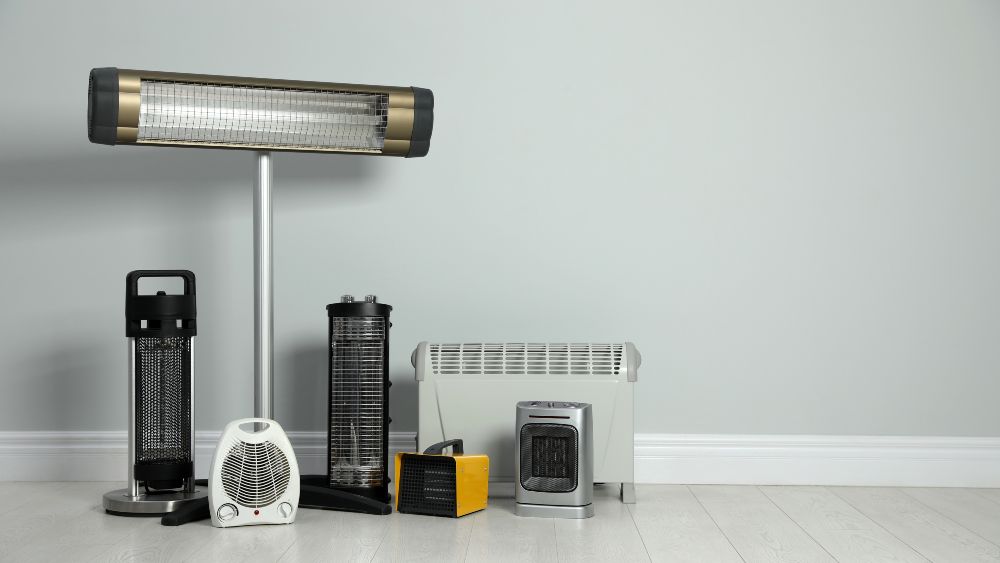Some Known Details About 1 Source Portable Air
Wiki Article
Unknown Facts About 1 Source Portable Air
Table of ContentsAn Unbiased View of 1 Source Portable Air1 Source Portable Air Things To Know Before You Get This1 Source Portable Air Things To Know Before You BuyFascination About 1 Source Portable AirLittle Known Questions About 1 Source Portable Air.
Running costs are based on an electrical energy cost of 40c/kWh. The prices for 3 months' use in winter are based upon 500 hours utilize, or approximately 6 hours each day for 3 months. Maximum heat outcome is based upon the optimum wattage of the versions we have actually tested (we concentrate on higher power level heaters).
On standard, small follower heaters are much less expensive to acquire, yet can have higher running prices. Oil column heating units will certainly be the cheapest on the market to run (on average) however just by a slim margin in advance of convection heating systems (like panel and micathermic panels).
1 Source Portable Air Fundamentals Explained
If you have a relatively easy to fix ceiling fan, it'll help disperse the warm around the room much more evenly. A number of costly heating units have failed to thrill our testers, while some less costly versions make for remarkably great buys.As the name suggests, they radiate heat from a heated burner (so the household will have to take turns being in front of it). There are floor and wall-mounted versions offered. Radiant heaters are reasonably inexpensive. They have a cosy glow and individual warming impact, like being in front of a fire.
The fairly exposed home heating component can be a fire and safety threat. For instance, an item of clothes went down over it may ignite, or children playing around a floor version might shed themselves, so beware. Radiant heating systems normally cost in between $20 and $200. Oil-filled column heating systems don't actually burn oil they utilize power to heat the oil that's sealed inside their columns or 'fins'.
An Unbiased View of 1 Source Portable Air
Some column heaters aren't also oil-filled yet rather make use of various other product or home heating innovation to work similarly - 1 Source Portable Air. The threat of fire with an oil column heating unit is low look at this site compared to various other heating unit kinds, but never zero. Oil heating units don't have exposed components like glowing heating systems do, and their surface area temperature is less than numerous other heater kinds (their large surface offsets it)Oil column heating units will not blow up, and while they don't melt their oil to produce heat, it's still combustible, so there is a fire risk if the oil leakages, if the heating unit ideas over and leaks, or if combustible items or fabric enter into get in touch with or drop on the heating unit. You must exercise the very same degree of care with oil heating units as for various other heating unit kinds, and never hang towels or clothes over one to completely dry them make use of a drying out shelf instead, a minimum of one metre away.
Column heating systems are particularly useful in read this article spaces where they'll be switched on for extended periods of time or where they'll run neglected, such as overnight in a bedroom. The surfaces you're likely to touch on a column heating unit don't get as warm as other kinds of electrical heating systems. You can use a ceiling fan on extremely low speed to aid the column heating system to distribute the warmth faster and a lot more evenly.
Oil-filled column heating units typically cost in between $50 and $450. Convection and panel heating units draw cool air over an electrical heating component.
Our 1 Source Portable Air Statements

Convection and panel heaters are a lot more portable than their oil-filled column heater equivalents since they're considerably lighter. They'll heat the air in Recommended Site a room uniformly and rapidly. Like a column heating system, you can use a ceiling fan on really low rate to disperse the warm quicker and more uniformly. Some models, specifically panel heaters, are somewhat pricey to purchase.

Indicators on 1 Source Portable Air You Need To Know
Fan heating systems are commonly smaller and more portable than various other electrical heating units. They likewise are available in the form of tower fan heaters, which can be better for dispersing heat around bigger spaces because of their taller profile. They can heat up the air in a space much more quickly, uniformly and promptly than a few other heating unit kinds.Follower heating systems (ceramic or otherwise) usually expense between $60 and $900. Ceramic follower heating systems aren't necessarily any kind of various in rate to non-ceramic models.
Report this wiki page